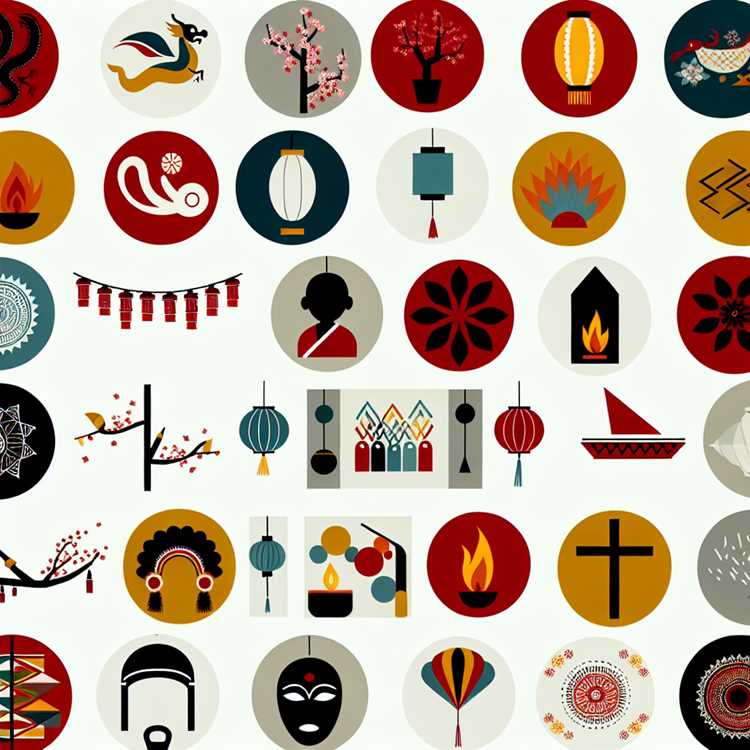
Attend three contrasting festivals this year: one large public event, one regional religious or seasonal celebration, and one small community fair. Choose specific dates now–book flights and lodging 3–6 months ahead for most major events and 6–12 months for capacity-limited gatherings–so you secure lower fares and preferred accommodations.
Pick festivals with clear calendars and known scales: Oktoberfest (Munich, late September–first weekend in October) draws about 6 million visitors across roughly 16–18 days; La Tomatina (Buñol, last Wednesday of August) limits participants to about 20,000; Burning Man (Nevada, late August–early September) caps attendance near 70,000. Plan for festival duration (single-day to multi-week), typical crowd sizes, and local climate when selecting events–these three factors drive cost and packing choices.
Set a practical budget: many street festivals remain free while flagship events often require tickets that range from under $50 to several hundred dollars. Expect accommodation prices to increase by 30–100% during peak dates; opt for neighborhoods 20–40 minutes from the main venue to cut nightly rates by roughly 20–40%. Reserve refundable options where available and compare total trip cost (tickets + lodging + local transport) before committing.
Prepare for logistics on arrival: buy public transit passes or check shared-ride availability in advance, carry local currency for vendors, and store digital copies of travel documents. Learn 8–12 simple local phrases and keep a concise etiquette note–ask permission before photographing rituals, follow dress guidelines at religious sites, and comply with crowd-control instructions from organizers.
Protect your health and safety with concrete steps: verify recommended vaccinations for the country, pack a basic first-aid kit and electrolyte tablets, use sunscreen and insect repellent as required, and plan daily hydration and quiet hours to reduce fatigue. Final checklist: confirm tickets and lodging, notify your bank of travel dates, download an offline map and translator, and leave a copy of your itinerary with a contact at home.
How to Choose a Festival by Climate, Season and Crowd Size
Pick a festival whose average daytime temperature and precipitation match your tolerance: 18–25°C for light layers and walking long distances; 25–32°C if you tolerate heat and humidity; below 10°C requires insulated outerwear and windproof layers.
Climate checklist
Compare monthly climate normals (mean temperature, monthly rainfall in mm, average humidity, and daylight hours) for the festival month. Use local meteorological data for the specific city rather than country-wide averages.
Target dew point thresholds: below 16°C feels comfortable; 16–21°C feels muggy; above 21°C feels oppressively humid. If dew point >21°C, prioritize events with covered stages or evening schedules.
Use these quick rules for precipitation: monthly rainfall <50 mm → low risk of weather disruption; 50–150 mm → bring waterproofs and quick-dry gear; >150 mm → expect mud, consider waterproof footwear and covered programming.
Check UV index and daylight: UV index ≥8 requires sun protection (broad-spectrum sunscreen SPF 30+, wide-brim hat, long sleeves). If you avoid heat, choose late-afternoon/evening schedules or shoulder-season months.
Factor altitude: festivals above 1,500 m expose you to stronger sun and thinner air; above 2,500 m allow 48–72 hours for acclimatization and reduce strenuous daytime activity.
Account for health risks in tropical zones: verify required vaccinations (e.g., yellow fever) and malaria prophylaxis where advised; consult official health sources 6–8 weeks before travel.
Crowd-size strategy
Classify festivals by attendance and match them to your preference: micro (<1,000), small (1,000–5,000), medium (5,000–50,000), large (50,000–500,000), mega (>500,000). Choose micro/small for interaction and short lines; choose medium/large for diverse programming and headliners; pick mega only if you accept long waits and heavy logistics.
Estimate crowd density for standing areas: 0.5 m²/person = very crowded; 1–2 m²/person = typical festival standing area; 3–4 m²/person = comfortable. If you need personal space, avoid events whose venue area divided by expected attendance yields <2 m²/person.
Book logistics by size: micro/small often allow late ticket purchases and flexible accommodation; medium/large require booking transport and lodging 2–4 months ahead; mega events need tickets and travel 6+ months in advance.
Operational tips: for crowded events, plan arrival 60–90 minutes before main acts, identify exit routes, set a fixed meeting point, and carry a portable battery and compact first-aid items. For wet or hot forecasts select covered stages or evening programming.
Match festival type to crowd size: niche cultural or artisan festivals commonly fall in micro/small; citywide cultural weeks and national holidays produce medium to mega crowds. Check past attendance figures published by organizers or municipal authorities for accurate comparisons.
Creating a Travel Budget and Finding Low-Cost Festival Tickets
Buy festival tickets during official presales–these are commonly 20–40% cheaper than on-the-door prices and often include reduced fees or payment plans.
Build a clear budget with percentages so you can adjust numbers quickly: allocate roughly 25–35% for tickets, 20–35% for transport, 15–25% for lodging, 10–15% for food and on-site purchases, 5–10% for extras (merch, workshops), and 10% as a contingency reserve.
- Example 3-day budget (USD): total $800
- Ticket: $160 (20%)
- Flight/Train/Bus: $240 (30%)
- Accommodation: $160 (20%)
- Food & drinks: $120 (15%)
- Local transport & extras: $40 (5%)
- Contingency/insurance: $80 (10%)
- Example 5-day budget (USD): total $1,500
- Ticket + camping bundle: $300
- Transport (international flight): $600
- Accommodation (hostel/private split): $250
- Food: $200
- Extras & contingency: $150
- Set a target and automate savings: transfer $25–50/week to a dedicated account–$25/week reaches $400 in 16 weeks; $50/week reaches $800 in 16 weeks.
- Hunt for travel fares: use Google Flights, Skyscanner, Kayak fare calendars and set price alerts. For domestic trips, check 4–8 weeks before departure; for international flights, monitor prices 8–16 weeks out and watch for seasonal sales.
- Compare transport modes: long-distance buses or night trains can cut transport costs by 50–80% versus last-minute flights; example: a regional bus $20–40 vs a flight $120+ one-way.
- Trim accommodation costs: camping or festival-provided campsites usually run $15–50/night; hostels average $15–40/night; split private rentals with 3–4 people to reduce per-person rates by 40–60%.
- Plan food smart: allocate $20–40/day if you eat mostly market/food-truck options; bring a small cooler or snacks to lower on-site purchases by up to 60%.
- Factor fees and baggage: low-cost carriers often add $25–60 per checked bag each way–use carry-on only when possible and compare total door-to-door costs.
Ticket-saving tactics:
- Subscribe to the event newsletter and enable push notifications on organizer channels for presale codes and flash releases.
- Join fan clubs or credit-card presales–these often release a limited block at 10–30% below later tiers.
- Buy official bundles (ticket + camping or shuttle); bundles frequently undercut separate purchases by $20–60.
- Use verified resale platforms (Ticketmaster Verified Resale, StubHub) and add expected fees (typically 10–25%) into your budget before purchasing.
- Consider volunteering: many festivals exchange 12–20 hours of shifts for a free 3–4 day pass and sometimes free camping; confirm shift length, deposit requirements, and any additional costs.
- Check student/youth discounts and regional promos–ID-based discounts can reduce ticket price by 10–30%.
Protect your purchase and budget:
- Prefer tickets with a clear refund or transfer policy; if uncertain, buy a refundable option or ticket-protection add-on.
- Buy travel insurance that covers event cancellation and unused travel; expect premiums of roughly 4–7% of total trip cost (for a $1,000 trip, $40–$70).
- Pay with a card that offers purchase protection or dispute resolution to reduce fraud risk on resale purchases.
On-site cost cuts:
- Bring a refillable bottle and a small cooler when allowed–reduces drink/food spend by 30–60%.
- Share gear and split rides: splitting a rental car or taxi with 3–4 people can cut per-person transport by 50–75%.
- Pre-book shuttle passes and transit cards–these often cost less than single fares bought at the event.
Quick booking timeline:
- 12+ months: plan and save for major destination events; monitor pre-registration.
- 6–12 months: secure flights for international travel and watch for early-bird tickets.
- 4–8 weeks: lock in lodging and local transport; set final alerts for last ticket releases or resale opportunities.
- 1–2 weeks: confirm packing, local cash/ATM options, and activate insurance if needed.
Respecting Local Customs: Dos and Don’ts at Religious and Indigenous Festivals
Cover shoulders and knees at temples, mosques and sacred groves; many sites deny entry or provide loaner garments if you arrive improperly dressed.
Dos
Ask permission before photographing people or ceremonies; approach a guardian or elder and use a simple phrase such as “May I take a photo?” If the answer is yes, keep images discreet and avoid flash during rituals.
Remove shoes and hats where indicated; combine signage with local cues – if people leave footwear at an entrance, follow their lead. Carry lightweight shoe covers or a small bag to hold shoes if access is restricted.
Use both hands when presenting offerings, gifts or money in many Asian, African and Pacific cultures. Offer small cash donations in local denominations; typical amounts range from a few cents to a few dollars equivalent, but follow local guidance at collection points.
Wear a head covering in places that request it. If unsure, ask a steward or observe the majority practice; provide a scarf or shawl for spontaneous compliance.
Observe gender-specific spaces and seating. If a ceremony separates men and women or reserves areas for elders and priests, accept placement without comment and follow directional signage or ushers.
Follow timing and procession rules: arrive early to find a seat, stand when the congregation stands, and leave quietly during breaks. Keep phones on silent and step outside to consult maps or messages.
Don’ts
Do not touch sacred objects, altars, masks or offerings unless a host explicitly invites you. Handling ritual items can offend or invalidate a rite for participants.
Do not photograph rites involving private ceremonies, initiation rites, gender‑specific rites or anyone who refuses consent. In many communities, such images are restricted and can cause social harm.
Avoid bargaining over sacred goods or offerings. Pay posted prices and treat ceremonial sellers with the same courtesy you would your host; haggling in a shrine area often feels disrespectful.
Do not bring food, meat or alcohol into places that prohibit them. Observe posted rules and ask before consuming anything near altars, processional routes or communal tables.
Do not point or gesture with your feet; in Southeast Asia and the Pacific pointing with the foot is offensive. Sit with feet tucked away from religious images and people of higher rank.
Avoid loud discussion, public displays of affection or intrusive behavior around mourning ceremonies, healing rites and private prayers. If attendants ask for silence, comply immediately.
If unsure at any moment, ask a local steward, elder or the festival information desk for guidance and accept corrections politely; following local direction protects both visitors and the integrity of the ritual.
Packing Checklist for Multi-Day Outdoor Celebrations
Pack a lightweight, waterproof 3-season tent with a footprint and at least one spare stake for soft or rocky ground.
Shelter & sleep – choose items that save space and improve rest:
- Tent: 2-person freestanding or tunnel tent, packed weight 2–3 kg; bring a footprint or tarp to protect the floor.
- Sleeping bag: temperature rating 0°C for cool nights, 10–15°C for mild climates; down 600–800 fill for compressibility, synthetic if humidity is likely.
- Sleeping pad: inflatable or foam with R-value ≥3.0 for insulation and comfort.
- Pillow: small inflatable or stuff-sack with clothes for support.
Clothing & footwear – plan layers and quantities by days and weather:
- Base layers: 1–2 merino or synthetic tops, rotate and wash as needed.
- Bottoms: 1 pair weather-resistant pants and 1 lightweight short/second pair.
- Underwear & socks: one pair per day plus one spare sock and spare underwear.
- Outer layers: pack a waterproof breathable jacket (e.g., 20,000 mm/20,000 g), a lightweight insulated layer (200–300 g down or synthetic), and a windbreaker.
- Footwear: sturdy, broken-in trail shoes and camp sandals; bring gaiters if mud is likely.
- Accessories: wide-brim hat, beanie, buff, pair of work gloves, and UV-protective sunglasses.
Food, cooking & water – prioritize safety and simplicity:
- Stove & fuel: single-burner canister stove with one extra full canister for every 2–3 days of cooking, or compact multi-fuel/alcohol stove with spare fuel bottle.
- Cookware: 800–1,200 mL pot, lightweight pan, spork, small cutting board and a collapsible bowl/cup.
- Food plan: calculate 2,500–3,500 kcal per person per day; bring high-calorie snacks (nuts, bars), dehydrated meals, and easy-to-prepare breakfasts.
- Hydration: carry 2–4 L water capacity (bladder + bottles); bring a backup water treatment (filter 0.1–0.2 µm or chemical tablets) for refills.
- Portable cooler: 24–48 hour soft cooler for perishables or use frozen bottles as ice packs to extend freshness.
Lighting, power & electronics – balance brightness and runtime:
- Headlamp: 200–400 lumens with red-light setting; bring two sets of batteries or a rechargeable headlamp + 10,000–20,000 mAh power bank.
- Power bank: 20,000 mAh supports multiple phone charges; carry a 10W foldable solar panel if you expect full days of sun.
- Phone & chargers: waterproof pouch, short charging cable, and a USB multiport adapter if sharing power.
- Small speaker: choose a rated IPX waterproof model and keep volume respectful of neighbors.
First aid & personal safety – prepare for common issues:
- First aid kit: adhesive plasters, blister pads, antiseptic wipes, gauze, tape, tweezers, pain relief, antihistamine, and personal prescriptions (plus copy of prescriptions).
- Sun & insect protection: SPF 30+ sunscreen (at least 100 mL), zinc stick for lips, and DEET or picaridin repellent; bring a small tick removal tool where relevant.
- Ear protection: foam earplugs or over-ear protectors for loud stages or late-night noise.
- Emergency items: whistle, compact mirror, emergency bivvy or thermal blanket, and a printed emergency contact list kept dry.
Hygiene & waste management – keep comfort and site rules in mind:
- Toiletries: biodegradable soap (small bottle), quick-dry towel, toothbrush/toothpaste, feminine hygiene supplies in sealed bags.
- Hand sanitation: at least two 60–100 mL bottles of hand sanitizer for multi-day use.
- Waste bags: pack out all trash; bring separate bags for recyclables and wet waste; include a small trowel if site allows burying toilet waste.
Documents, money & campsite logistics:
- ID & tickets: keep originals in a waterproof holder and photos/scan backups on your phone and a cloud account.
- Money: cash in small denominations for vendors plus one card in a waterproof sleeve; share contact and meeting point with group.
- Maps & schedule: printed site map and a paper copy of the event schedule in case of phone failure.
Tools, repairs & small comforts:
- Repair kit: multi-tool, duct tape strip, cordage (5–10 m of paracord), spare tent guylines and needle with repair thread.
- Laundry: small sink soap bar and a travel clothesline for quick washes.
- Comfort items: compact camp chair or sit pad, lightweight canopy or tarp for shade, and 2–3 clothespins for securing fabrics.
Packing strategy & weight management:
- Distribute heavy items (stove, food, water) centrally and low in your pack to maintain balance.
- Use dry sacks for clothing, electronics, and first aid to separate wet/dirty items from clean gear.
- Pack daily-change clothes in an accessible top pocket for quick swaps without unpacking the main bag.
- Trim redundancies: combine tools, choose multi-use items, and limit bulky luxuries when you expect long walks between campsite and events.
Compact checklist (3–5 days, 1 person):
- Tent + footprint + 1 spare stake
- Sleeping bag (0–15°C) + sleeping pad + pillow
- Water system: 2–4 L capacity + filter/tablets
- Stove + 1–2 fuel canisters or fuel bottle
- Cookset + spork + small sponge
- Clothing: 2 tops, 2 bottoms, daily underwear/socks + 1 spare of each
- Waterproof jacket + insulated layer
- Headlamp + 20,000 mAh power bank
- First aid kit + prescriptions
- ID, tickets, cash, phone, waterproof pouch
- Earplugs, sunscreen, insect repellent
- Repair kit, multi-tool, paracord
- Trash bags + personal hygiene kit
Adjust quantities for group gear sharing, climate, and site facilities; pack lighter for short treks between stages, heavier if you plan to camp at one spot for several days.
Food Safety and Navigating Street Vendors at International Festivals
Pick stalls that cook food to order in front of you; high turnover reduces time food spends in the danger zone and lowers contamination risk.
Look for visible temperature control: hot foods held above 60°C (140°F) and cold items below 5°C (41°F). Avoid dishes that have been sitting uncovered at ambient temperature for more than 2 hours, or more than 1 hour when ambient temperature exceeds 32°C (90°F).
Prefer fully cooked proteins: poultry should reach 74°C (165°F), ground meats 71°C (160°F), and whole fish 63°C (145°F). Ask how long marinades or sauces have been at room temperature and avoid uncooked garnishes if the vendor lacks clean water.
Quick safety checklist
Visibility: cook-to-order, steaming pots, clear flame or griddle contact.
Cleanliness: vendor washes hands (20 seconds) or uses gloves/tongs; separate utensils for raw and cooked items; no bare-hand contact with ready-to-eat food.
Water and ice: drink sealed bottled water; accept ice only from sealed bags or visibly made from treated water.
Turnover and crowding: busy stalls move stock quickly–shorter storage times and fresher supplies.
Allergens and ingredients: carry a short translation card listing food allergies in the local language; ask vendors to confirm ingredients and cross-contact practices.
Pricing and packaging: suspiciously cheap perishable dishes or pre-plated items left uncovered are higher risk; prefer freshly plated servings.
If you feel unwell
Begin with oral rehydration and clear fluids; avoid anti-diarrheal medications for severe symptoms without medical advice. Seek local medical care if you experience high fever (>38.5°C / 101.3°F), persistent vomiting, bloody diarrhea, or signs of dehydration.
Carry a small kit: alcohol-based hand sanitizer (60%+ alcohol), single-use utensils or napkins, and oral rehydration sachets. When in doubt, opt for a sealed product or a vendor you can watch prepare your meal from start to finish.
Timing Your Accommodation: When to Book Hostels, Hotels and Homestays
Book hostels 1–3 months before popular festivals, hotels 3–9 months, and homestays 2–6 months; for mega-events such as global sporting finals or major city carnivals, move hotel and homestay bookings to 6–12 months ahead.
Hostels: reserve shared beds 4–12 weeks out for most cultural festivals; secure private hostel rooms 2–4 months ahead during busy seasons. Expect dorms to fill first and private rooms to disappear next. Use booking platforms with free cancellation if plans may shift, and check whether the hostel enforces a strict no-refund policy for festival dates.
Hotels: aim to book 3–9 months ahead for regional festivals and 6–12 months for large international events. During high demand, nightly rates can rise 30–100% compared with baseline months; some properties require full prepayment or non-refundable deposits for festival periods. Compare refundable vs non-refundable rates and reserve refundable when price volatility or date changes are possible.
Homestays: contact hosts 2–6 months ahead for cultural stays that include meals or participation in family activities; shorter notice (4–8 weeks) may work for smaller local celebrations. Expect hosts to request 10–30% deposits and to ask about arrival times. Send a direct message 1–2 weeks before arrival to confirm check-in logistics and any meal arrangements.
Timing tactics: choose mid-week stays to reduce cost and increase availability, arrive a day before main festival dates to avoid last-minute price surges, and book return nights after the event as hotels often block rooms for multiple nights. For festivals with moving dates (religious or lunar calendars), wait to finalize non-refundable bookings until organizers publish official dates; for fixed-date events, lock in accommodation as soon as tickets are purchased.
| Festival Scale | Hostels | Hotels | Homestays | Notes |
|---|---|---|---|---|
| Small local festival | 4–6 weeks | 4–8 weeks | 4–8 weeks | Book mid-week stays and check local guesthouses for last-minute availability. |
| Regional festival | 1–3 months | 2–6 months | 1–4 months | Expect higher weekend rates; refundable options reduce risk. |
| Major international event | 3–6 months | 6–12 months | 3–9 months | Secure accommodations immediately after event announcements and ticket purchase. |
Practical checklist: set price alerts for target dates, prioritize refundable reservations when dates are uncertain, confirm deposit and cancellation terms before paying, contact homestay hosts directly for arrival details, and keep a nearby backup option within walking distance in case your first choice cancels.


